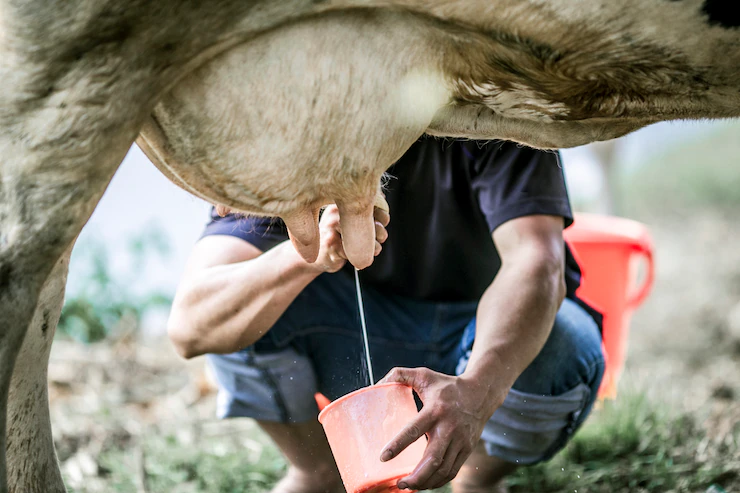Dairy farming in South Africa plays a significant role in the country’s agricultural sector. The process of producing milk from cows involves several stages, from cow selection and management to milk production and processing. Let’s explore the journey from cow to milk in South Africa’s dairy industry.
- Cow Selection and Breeding: Dairy farmers in South Africa typically select dairy breeds such as Holstein, Jersey, and Ayrshire for milk production. These breeds are known for their high milk yields and adaptability to various climatic conditions. Farmers may breed their own cows or purchase calves from specialized breeders.
- Calf Rearing: When the calves are born, they are separated from their mothers shortly after birth to prevent them from consuming colostrum, the first milk produced by the cow. Colostrum contains essential antibodies that provide immunity to the calves. The calves are then bottle-fed with a milk replacer specifically formulated for their nutritional needs.
- Housing and Feeding: Dairy cows in South Africa are typically housed in barns or free-range systems, depending on the farm size and management practices. Barns provide a controlled environment, ensuring cows’ comfort and protection from extreme weather conditions. Cows are fed a balanced diet consisting of hay, silage, grains, and protein supplements to meet their nutritional requirements.
- Milking Process: The milking process is typically conducted using milking machines in South African dairy farms. Cows are brought to a milking parlour or a rotary milking system where they are cleaned, and the milking machine is attached to their udders. The milking machines simulate the action of a calf suckling, gently extracting milk from the cow’s udder.
- Milk Handling and Storage: Once the milk is collected, it is filtered and stored in bulk milk tanks, which are refrigerated to maintain the milk’s freshness and quality. Strict hygiene standards are followed throughout the milk handling process to ensure the milk remains uncontaminated.
- Transportation and Processing: Milk is transported from the farm to dairy processing plants. In South Africa, these plants receive raw milk and undergo various processing steps such as pasteurization, homogenization, and separation to produce different dairy products like milk, butter, cheese, and yogurt. These processed products are then packaged and distributed to retail stores or other outlets.
- Quality Control and Regulations: The South African dairy industry adheres to strict quality control and safety standards. Regulatory bodies, such as the Department of Agriculture, Land Reform, and Rural Development, oversee the industry and enforce regulations related to milk production, processing, and labeling. Regular inspections and testing are conducted to ensure compliance with these standards.
- Market and Consumption: South Africa’s dairy industry caters to both domestic and international markets. Locally, milk and dairy products are widely consumed by the population, with milk being a staple in many households. The surplus production is exported to neighboring countries and sometimes overseas.
It’s important to note that specific practices and processes may vary among dairy farms in South Africa, depending on factors such as farm size, location, and management philosophy. However, the general journey from cow to milk follows the steps mentioned above, ensuring a steady supply of quality dairy products for consumers.
Join 'Farmers Mag' WhatsApp Channel
Get the latest Farming news and tips delivered straight to your WhatsApp
CLICK HERE TO JOIN






